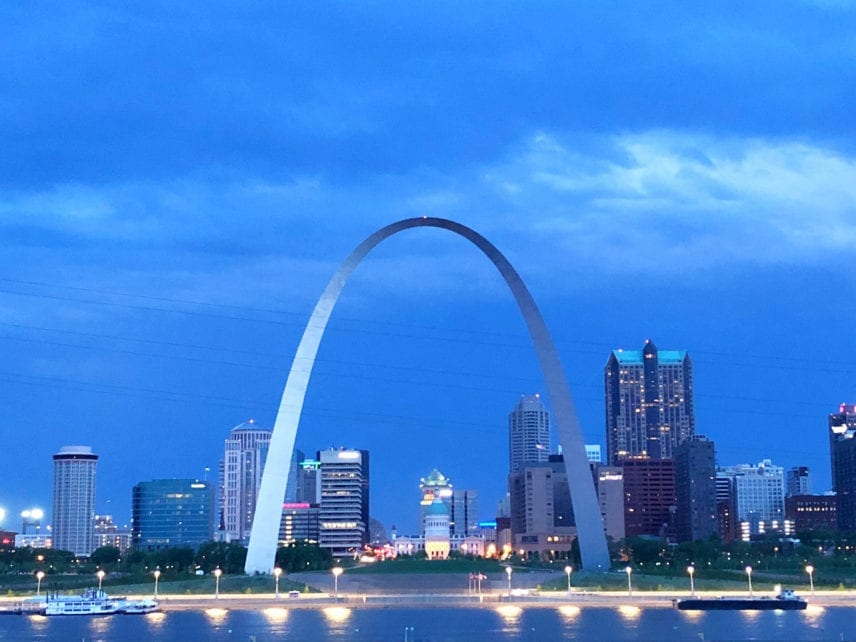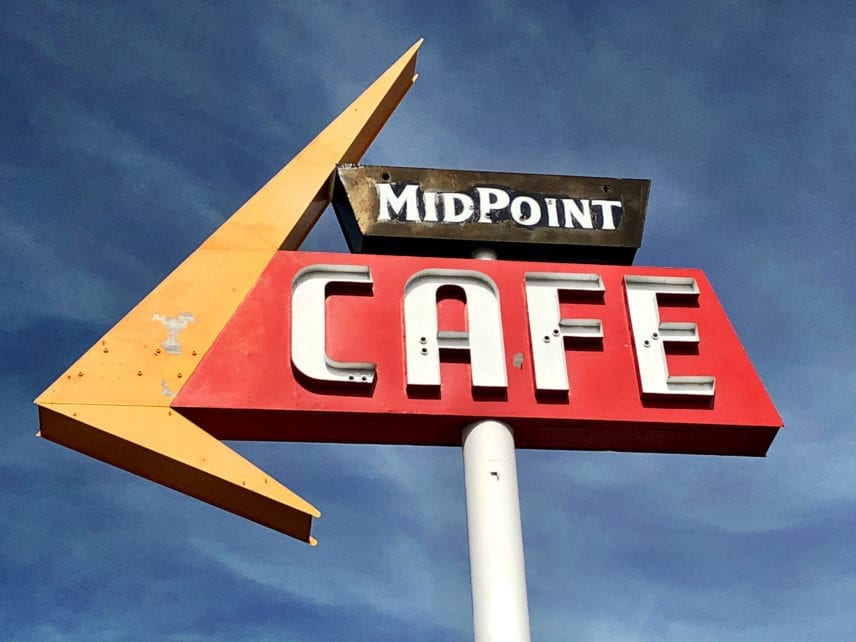
This post was written in partnership with Marriott International, whose sponsorship made this adventure possible and with whom it’s easy to travel Route 66 staying in a variety of Marriott International brands. Naturally, all thoughts and opinions are entirely my own.
On the first or second day of driving Route 66, I realized that most of the preconceptions about driving the so-called Mother Road are entirely incorrect. Well, to be more accurate, they’re gross generalizations. Over the decades, Route 66 has taken on near mythic status thanks to novels by Kerouac and Steinbeck, but also due to a rekindling of nostalgia for happier and simpler times. Route 66 embodies everything we want America to be. It’s about exploration on a grand scale, it’s about new opportunities, it’s about connecting with small communities and warm-hearted people across the country. While all of that is true, the day-to-day experience of actually driving Route 66 is a lot different than most people might realize. Today I want to dispel some of those myths, many fictions I believed before tackling the drive, and to share that while our idea of what Route 66 is really like might be skewed, it doesn’t detract from the magic of this incredible adventure.

It’s not one road and it’s not the interstate
Spanning eight states and more than 2,300 miles, US Route 66 was created in 1926 from an existing network of trails and roads, most of which were very primitive by modern standards. Over the years and several realignments, the roads that comprised the route were modernized, widened and paved making it easier for people to travel and experience the country. After the introduction of the Interstate Highway, Route 66 began a slow decline as communities were bypassed by the new super roads. This eventually led to its decertification in the 1980s when US Route 66 officially disappeared. Of course Route 66 hasn’t completely disappeared, it exists from Chicago to Santa Monica through alternate routes, frontage roads, gravel trails and a variety of other means. Sometimes Route 66 is actually the modern highway, but not very often and it’s mostly in the western portions where this occurs. No, to truly drive the real Route 66 is a challenge, one that I didn’t fully appreciate until we started the drive itself. Although many states and communities have embraced the legacy of Route 66, signage is not reliable and sometimes it’s not even correct. No, in order to make sure you’re driving the real Route 66 and not some approximate copy takes time, planning and a good guide. I bought several before my trip, but one in particular quickly became our Route 66 Bible – the EZ-66 Guide For Travelers. In this epic tome, the author has listed in exacting detail every single turn across the country that’s needed in order to drive the real and true road. It’s not easy, but as I quickly learned, it’s well worth the effort.

Solo trip not possible
Driving the real Route 66 means you can’t use those navigational aids we’ve all become so very reliant on. At first I thought I could “cheat” the system by changing the settings to avoid highways, but instantly I saw that wasn’t going to work. The apps and navigational aids are just too efficient, they want our trips to be fast and easy which is the opposite of a proper Route 66 drive. The Mother Road takes time for a variety of reasons, and right away I stopped trying to use Waze and Google Maps and relied entirely on the guidebook. It’s for this reason that I really don’t think a solo trip on Route 66 is even possible. You have to have a navigator paying very close attention to every detail in order to ensure that you haven ‘t accidentally deviated from the true road. It’s challenging, especially in larger cities, but on the first day Brendan and I agreed that if we were going to drive Route 66, then we were going to do it in the right way. Plus it’s more fun having someone there with you, experiencing the beauty of America and exploring places you never even imagine existed.

The first half
Route 66 imagery tends to highlight the Western portions of the drive, which is fine and understandable. There’s a certain level of drama and beauty in America’s deserts that is frankly unlike any other landscape in the world. However that doesn’t mean that the first half isn’t interesting, it absolutely is and our days in Illinois, Missouri and Oklahoma were amongst the best we enjoyed on the drive. Illinois in particular has done a great job at highlighting Route 66, not only with road signs, which were always appreciated, but with key stops highlighted and promoted. Whether it was through farmland, the forests of the Ozarks or the quirky Route 66 towns of Oklahoma, the first half of the drive was just as enjoyable as the second, even though these destinations don’t seem to enjoy the same level of popularity.

Hits major cities
While Route 66 does indeed run through some incredible rural areas and small towns that have almost completely disappeared, it also includes major cities as well. If you think about it, that only makes sense. Route 66 connected one place to the next, and the large cities were very important stops along the way for most travelers. Chicago, St. Louis, Oklahoma City, Amarillo, Albuquerque and Los Angeles are among the largest cities on the route and each one adds something unique and interesting to the experience. What turned out to be important was spending extra time at the beginning and end of the trip, not just to take care of logistics but to also enjoy the cities. Route 66 is a marathon, not a sprint and it’s important to embrace what makes the trip so great in the first place. Playing tourist in both Chicago and LA was fun and created some of my most important memories from the trip. If I had had more time, I would have spent a few extra days exploring the larger cities along the way though. Many were little more than places for me to spend the night and I should have planned for two or more days in places like St. Louis and Oklahoma City.

Not dead
I didn’t know what to expect from Route 66 before I started the drive. I thought that the cobbled together roads and trails would lead me to places long forgotten to time. While that was true, what is also true is that nearly every community has warmly embraced the Route 66 legacy. Whether it was a simple road sign or a full-blown Route 66 roadside attraction, most towns and communities along the way still honor the route today. Route 66 is anything but dead, it’s an active drive whose history and legacy is apparent on nearly every one of the 2,300 miles that stretch across the continent. It’s kept alive thanks to curious tourists, drivers who want to discover a different side to the US and to perhaps relive more than a few nostalgic moments. It’s kept alive by the many businesses that line Route 66, from diners to motels and everything in between. Route 66 only existed for 59 years, yet its importance and legacy continue well on into the 21st century with no clear signs of dying anytime soon. That’s amazing I think, in an age of tablets and jets thousands of people want something different. They want slower travel where maps are again king and every corner reveals another surprise. Route 66 is all that and more and, after spending two weeks exploring the full width and breadth of the Mother Road, I can happily report back that it more than delivers on this promise.

A fitting tribute to this legendary route. Way back in 2008 when I was studying in the States, I had a friend who insisted on using manual maps than a GPS while road tripping because he felt it was more “authentic.” It took me years to understand what he meant.
I enjoy reading ALL your blogs. Your travel adventures and your perspective is a breath of fresh air.